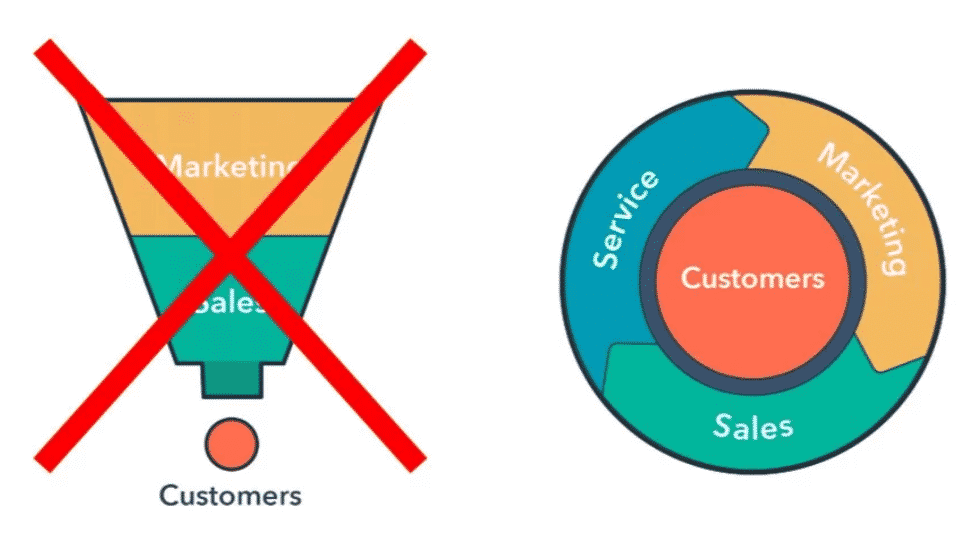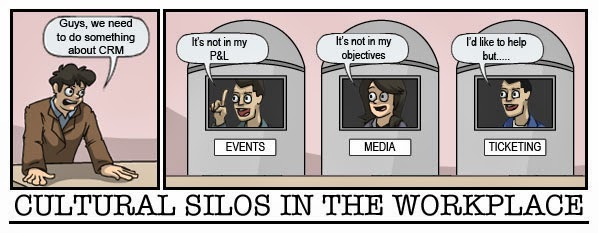You’ve made it! You’ve finally grown your business enough to the point where you have both sales reps and one or a few people coordinating your marketing efforts. In the beginning, it was only you, wearing all the hats, which was crazy but you also had visibility into everything. If you were kicking butt and way ahead of your goal, you knew why. If you were struggling to make your numbers, you were definitely aware. But as you get to that next step where your business has specialized go-to-market teams, it’s harder to spot problems and sometimes, you only know there is trouble in paradise when it’s too late.
The good news is that this classic but persistent problem scenario is totally avoidable. You can create an environment where insights from marketing and direct feedback from sales are shared freely.
With the right combination of technology, communication, and follow-up processes, your sales and marketing teams can work together as a more cohesive unit that generates and celebrates results together.
In this blog, we’ll help you identify the telltale signs of sales-marketing conflict and what steps you can immediately take to counter them.
1. Marketing doesn’t know what happens after the handoff

Image source: Pixel productions INC.
Scenario: From the moment a prospect lands on your website to when they fill out a consultation form and ask for a sales call, your marketing team knows everything about those leads. They know how likely an email will be opened, the percentage of people who will download a resource document, and the most common questions people might ask. But as soon as a lead goes from the marketing funnel to sales, they lose that visibility. When more than half of those warm leads, ready-to-talk to sales don’t turn into anything, it’s easy for marketing to assume that sales isn’t doing its job.
Solution: In reality, the sales process is equally long and complex, and has an incredible amount of nuance to it. To close this gap, marketing should actively engage with sales to listen in on calls, hold regular meetings every quarter, and prepare talking points for sales in relation to specific campaigns. Not only does this help marketing understand what goes into the process, but it provides a conduit through which sales can give feedback about the status, readiness, and quality of the leads they receive.
Pro tip: Use a call tracking solution that allows your marketing team to listen to any sales call on demand.
2. Marketing doesn’t spend any time with the customers
Scenario: In most organizations, the sales team talks to prospects and maintains a steady relationship with customers, while marketing may not speak to anyone at all. The sales team begin to think that marketing has no idea of what prospects need and how they make the decision to become a customer.
Solution: This can be resolved easily by having your marketing staff schedule customer visits. Have each member of your sales and marketing teams spend half a day with the account representative at the customer’s place of business. On the other hand, marketers can also occasionally attend trade shows, go to local events, and introduce themselves when a customer visits the office. If both sides can get a shared sense of the customer’s needs and expectations, future communications can be avoided.
Pro tip: Get your marketing team to send out surveys to your customers so that they can tell you in their own words how your company is helping them and where you may be able to improve.
3. Sales has a different measure for success from marketing

Scenario: This is a major problem in almost every organization. Ask a marketer and a salesperson how they would define a sales-qualified lead and you’ll likely get two very different answers. The same is true for opportunities, close percentages, and attribution ranking. This is natural — these are two different teams working from different perspectives. But it can be addressed by sitting down and building a common language and set of metrics that all team members will agree on.
- When is a prospect considered a lead?
- When is that lead’s activity sufficient to be marketing-qualified lead (MQL)?
- When does that MQL convert to a sales-qualified lead (SQL) and trigger outreach?
Solution: By sitting together and clearly defining the stages of the contact life cycle, you can avoid the lead quality fights that are all too common between these teams. Improved communication will also lead to more effective and efficient teamwork.
Pro tip: Keep things simple so that you may be able to track these definitions by using CRM data. This will allow you to effectively measure your performance against defined goals.
4. Both teams disagree on their roles

Scenario: Technology has made it possible for marketing to take a more proactive and engaging role in the buyer’s journey, capturing and nurturing leads much deeper into the funnel than before. This should mean better prepared, higher qualified leads for sales, but that’s not always the case. And in some situations, there is a significant pushback if one side adopts and proceeds with new technologies that the other side is not familiar with.
Solution: Every organization should have a service level agreement (SLA) between sales and marketing that clearly outlines the role of both teams.
For marketing that means:
- How many leads should be provided to keep all salespeople efficient and productive?
- What percentage of leads should be sales qualified to meet sales targets?
- What are the content types and resources that will most effectively drive prospects down the funnel?
- What insights and resources can marketing provide to improve the conversion conversation with sales?
For sales it means:
- How many contacts per month does each sales need to make with a SQL to maximize the chances of success?
- How soon after a lead becomes sales qualified should a sales person reach out to that contact?
- What data should sales record in the CRM to provide insights to marketing and ensure ROI can be measured from different activities?
The goal here is for both sides to align their expectations and what the other team will provide.
5. Communication stalls at the worst possible times

Image source: Collaborative Climate
Scenario: Sales and marketing often work in silos — marketing within their own automation tools and sales strictly within a closed CRM.
Solution: Closed-loop marketing is designed to resolve this by keeping contact in the same system at all times and ensuring both sides have visibility into the others’ activities. Tools like HubSpot, Infusionsoft, and ActiveCampaign are designed to capture contact information as soon as they convert and track their future activities. These include future visits to the website, email activities, new form submissions, and future sales activities, which will be recorded in the connected CRM.
A system like this acts as the foundation of successful communication between sales and marketing. Building on that, the teams should have regular meetings that align expectations, evaluate progress and performance against the SLA, and make plans for how best to meet those targets in the coming month or quarter.
Sales and marketing are two halves of the same coin
With the right combination of process, technology, and communication, sales and marketing can coordinate to generate a higher number of high-quality opportunities that in turn grow the business. Do this right and you’ll be well on your way to improved insights, more sales, and increased revenue.
If you are struggling to reach your goals and the online marketing side of the equation is where you need the most help, Pronto may be the solution for you. Click here to schedule a call to discuss your business, then we’ll tell you about our website and marketing packages that deliver the kinds of results that keep sales teams happy.




